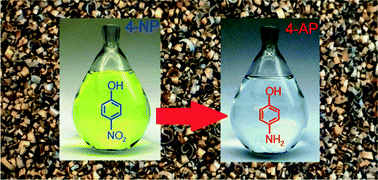Plastically deformed Cu-based alloys as high-performance catalysts for the reduction of 4-nitrophenol†‡
Abstract
The severe plastic deformation of metals leads to the formation of nanotextured surfaces as well as the retention of significant strain energy, characteristics which are known to promote catalytic activity. Here, we demonstrate plastically deformed surfaces of copper and copper-based alloys as being highly catalytic using the well-studied model catalytic reaction which reduces 4-nitrophenol to 4-aminophenol by borohydride. Among the materials studied, the most catalytically active is formed in a two-step process where metal chips are mechanically sheared from a Cu–Sn alloy containing precipitates and then exposed to an etchant which removes the precipitates from the exposed surface. The so-formed structures exhibit exceedingly high catalytic activity and set new benchmarks when incorporated into a fixed-bed reactor. The formation of catalytically active sites is shown to be strongly dependent on the presence of the precipitates during the deformation process, achieving an order of magnitude increase in the reaction rate constant when compared to similarly formed Cu–Sn catalysts lacking these precipitates. The work, therefore, demonstrates a new approach for generating catalytically active sites which may be applicable to other alloy combinations.


 Please wait while we load your content...
Please wait while we load your content...